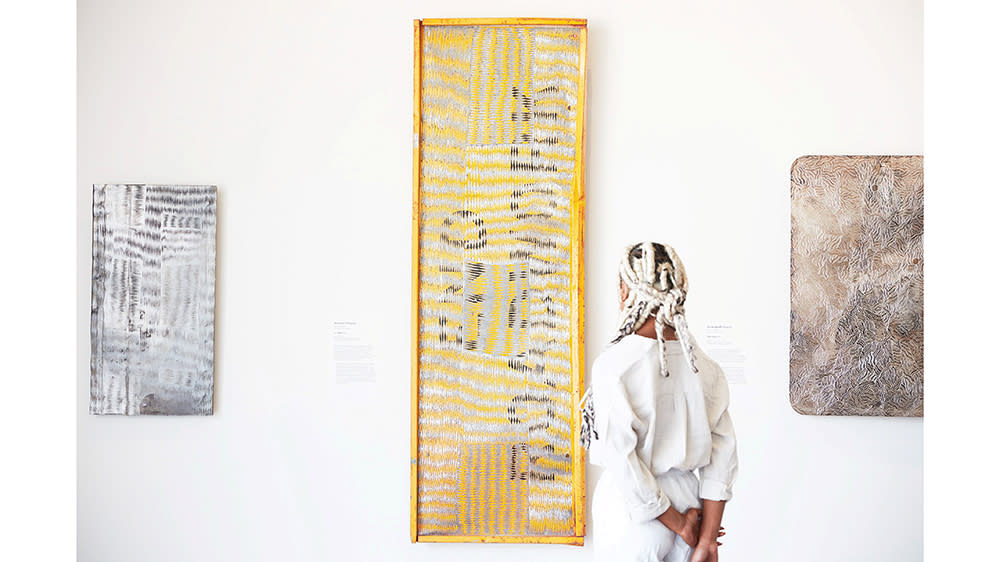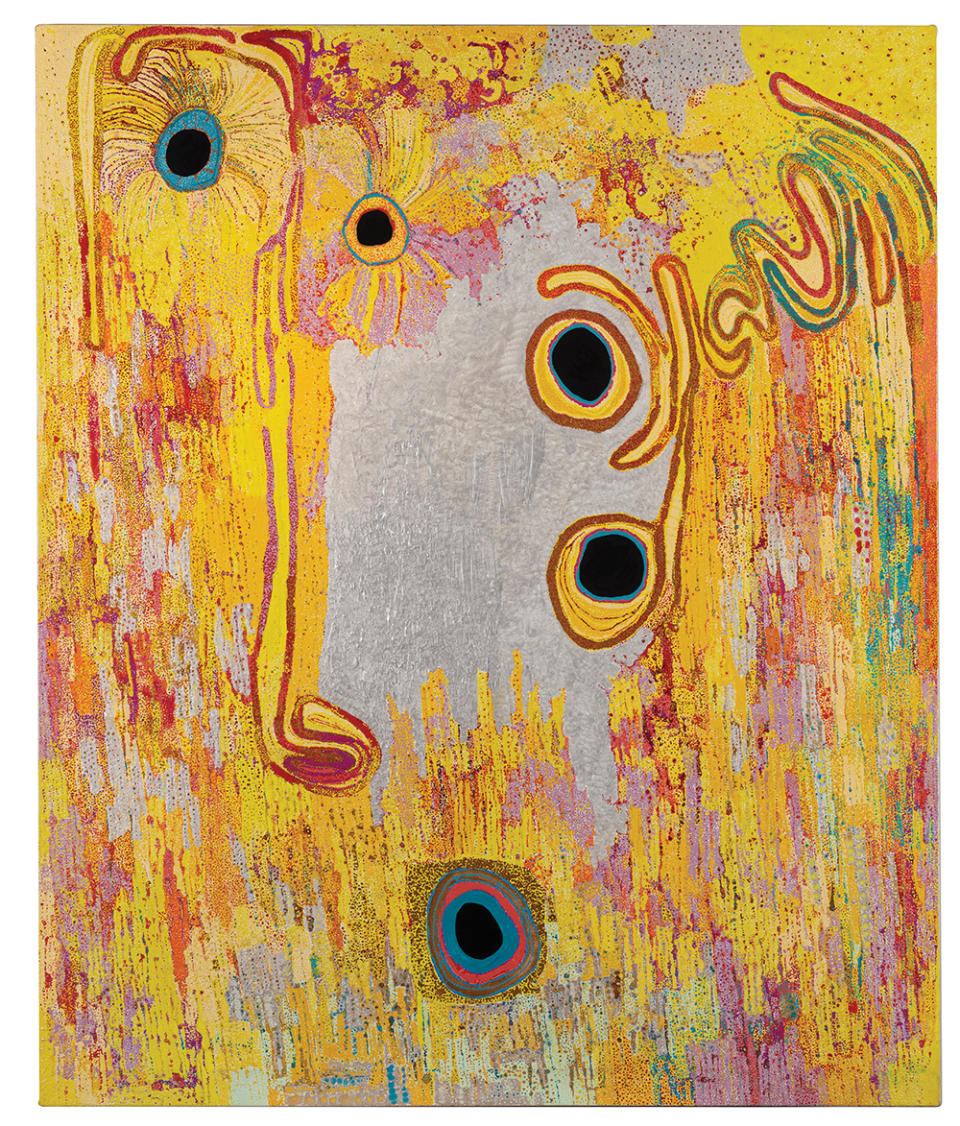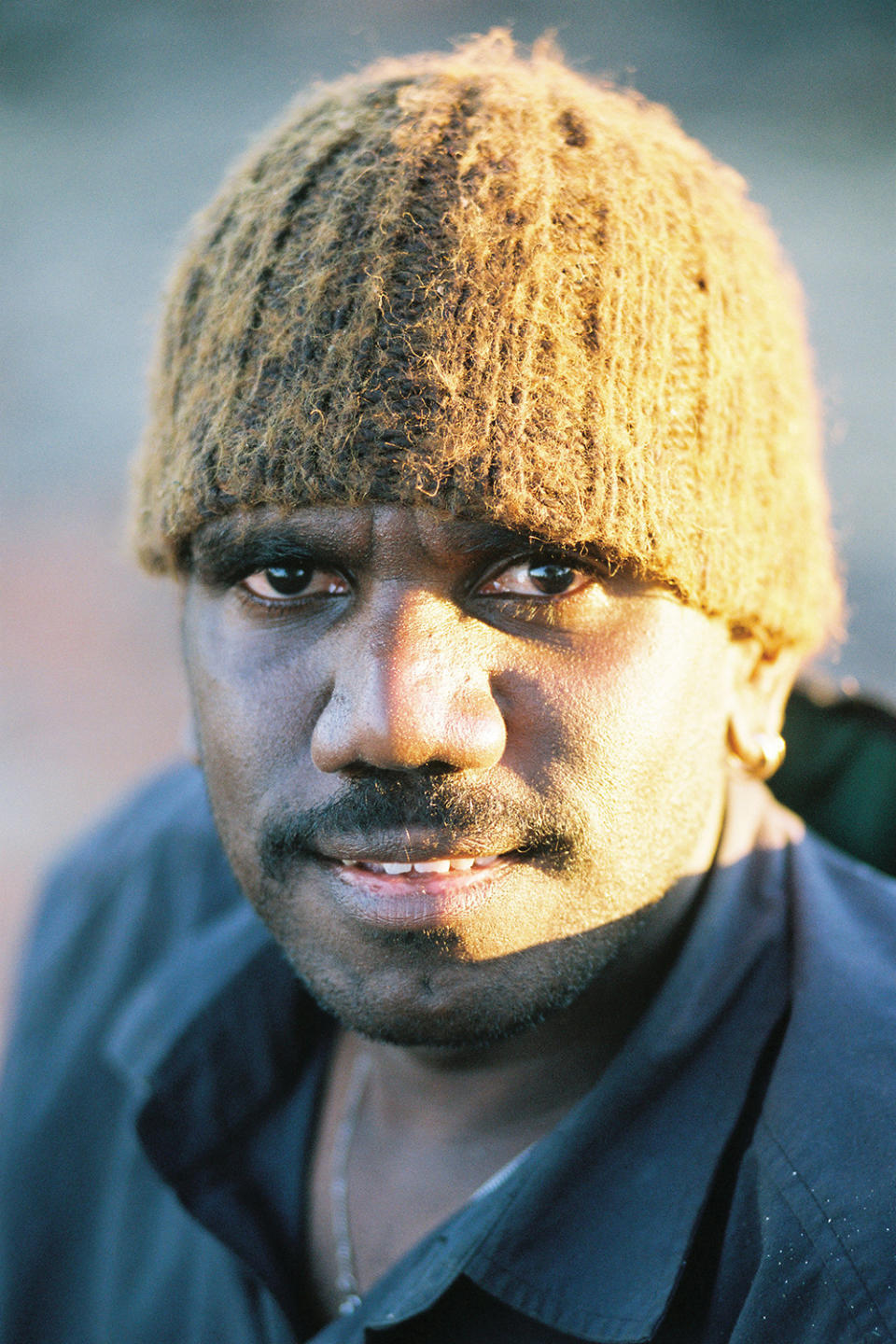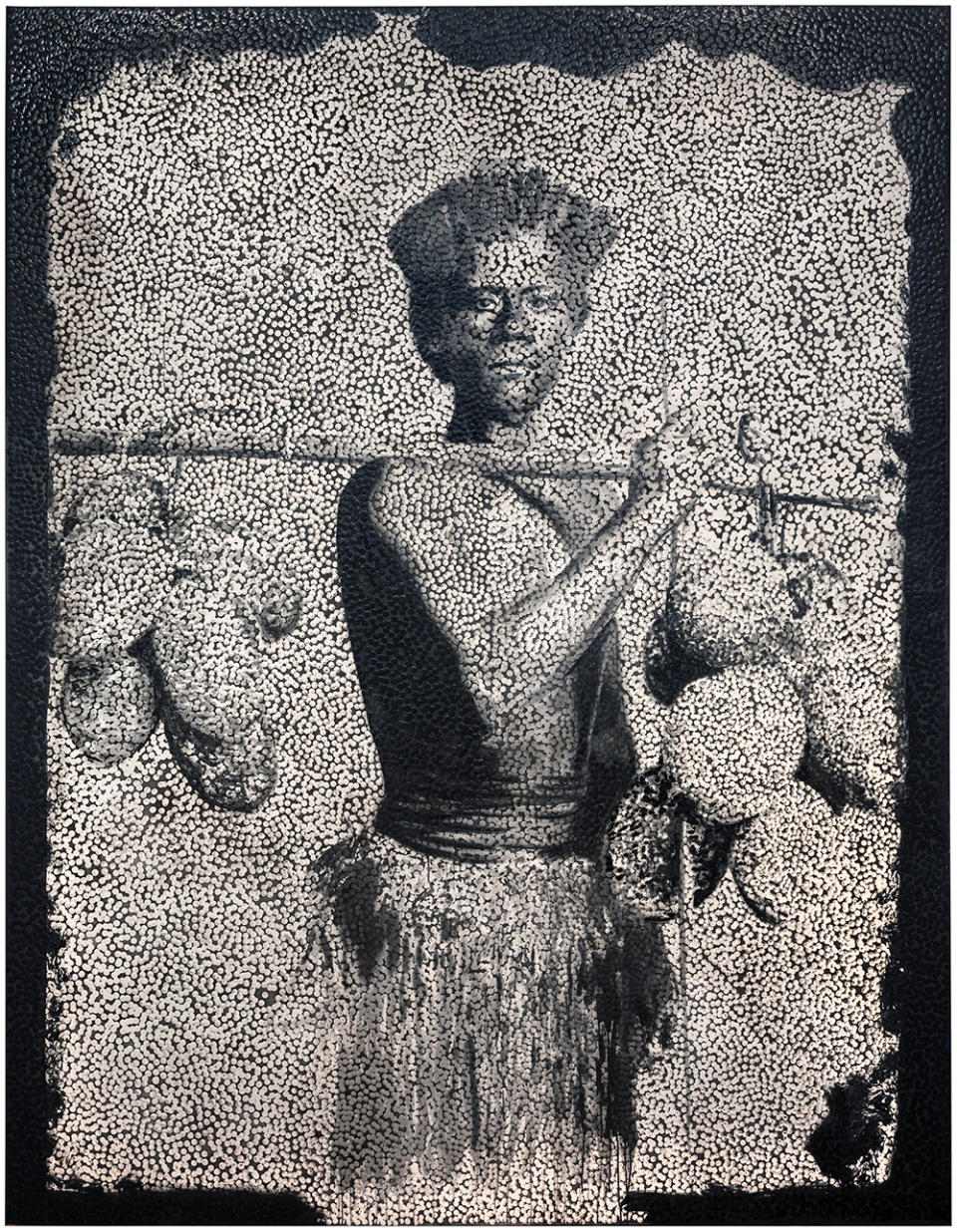Aboriginal Art Is Booming in Australia. Inside the Galleries and Museums Spotlighting First Nation Works.

When a flash flood sent a five-foot wave sweeping through the Mitchelton Gallery of Aboriginal Art last fall, curator Adam Knight helicoptered in to rescue what he could. The subterranean gallery—part of a luxury resort in the middle of a Victoria winery that’s a 90-minute drive north of Melbourne—is no glorified gift shop, but rather the largest commercial space in Australia devoted to work by First Nations artists. “I had to go myself—I knew what the masterpieces were,” he says. “There were moments when I thought I was going to drown while trying to save some of the key pieces.”
Knight’s rescue mission salvaged over 100 works, but more than 300 were destroyed. His determination reflects Aboriginal art’s newfound status both in Australia and in the larger art world.
More from Robb Report
Katsushika Hokusai's Iconic 'Great Wave' Print Fetches a Record $2.8 Million at Auction
This Ultra-Rare Ancient Gold Coin, Made to Mark Julius Caesar's Death, Was Just Returned to Greece
A Jackson Pollock Painting Discovered During a Police Raid in Bulgaria May Be Worth $54 Million
Ignored as little more than the stuff of souvenirs for decades, it has now taken seriously by collectors and curators alike. Politically, First Nations issues are on par with the Black Lives Matter movement, and culturally, contemporary Indigenous artists’ works typically reference the desert where their communities have lived for thousands of years, as well as such rituals and traditions as the coming-of-age walkabout. The paintings’ pulsating lines, concentric circles and arrays of dots often resemble Western-style minimalism or abstract expressionism.
“Painting is always a process, and in our culture, age brings transition and new knowledge, but for me it is always connected to land. It is sacred,” says artist Daniel Walbidi. “As I get older, the elders pass new teachings; these are the things that influence my work the most, my understanding of my culture.”

Citing Walbidi, Emily Kame Kngwarreye, Yukultji Napangati and Warlimpirrnga Tjapaltjarri, Melbourne gallerist D’Lan Davidson says, “There can be no doubt that in the last century, First Nations Australian artists have created some of the most spectacular and important contemporary art that this world has seen, or will ever see.” Generally speaking, the initial wave of First Nations artists became active in the 1960s, when the government forced Indigenous peoples to move to a settlement; many of today’s leading figures, such as Walbidi, were born in the ’80s or ’90s.
The market has been supercharged in just the past few years. Jeanne Greenberg Rohatyn fell in love with Tjapaltjarri ’s work when she saw his large-scale pieces at Documenta 13 in 2012 and, after tracking him down in the Papunya-Tula community, gave him a show at her Salon 94 gallery in New York in 2015. “I was moved by his clear expression of abstract meditation and painting as ritual,” she says.
But the real spark came in 2019, when Gagosian mounted two shows of work by Aboriginal artists, in New York and Los Angeles, featuring pieces loaned by the actor Steve Martin, a major collector of contemporary art. Now, Davidson’s gallery, D’Lan Contemporary, is set to open a space on the Upper East Side in May; meanwhile, in London, the exhibition A Year in Art: Australia 1992, rooted in the British Supreme Court ruling that overturned the doctrine the British used to justify colonization, will be on view at Tate Modern through May 14.

Even in Australia, only relatively recently have these artists been given their due respect. When Archie Moore represents the country at the Venice Biennale next year, he will become just the second First Nations artist to be given the honor (the first was Tracey Moffatt in 2017). Some of the greats appear in the new SANAA-designed Sydney Modern Project’s Yiribana Gallery. Much of the topographical-style imagery hanging there has frequently been dismissed as folk art, a superficial reading that many curators would attribute to colonial prejudice. These aren’t simply ornate maps: Maria Josette Orsto’s diptych Miyinga jilamara (2008), for instance, uses the pwoja—an ironwood comb—to create rhythmic dots referencing ritual body scarification, and the result is fresh and bold.
When the Sydney Modern Project opened in December, its original site next door at the Art Gallery of New South Wales was showing the first major solo museum exhibition of Daniel Boyd, whose imagery deconstructs the colonial past. The work is about his family tree as much as it is about politics, and his technique employs thousands of translucent dots, or “lenses,” on his canvases, akin to pointillism. Though one of the biggest stars of his generation—the National Gallery of Australia snapped up all of his graduate work—Boyd reserves some of his best pieces for relatives, rejecting the idea of art as commodity.

Such reticence has not stopped collectors from acquiring works by other Aboriginal artists. Private equity investor Danny Goldberg, one of Australia’s most prolific collectors, started buying art in 1993 but only in the past decade discovered what’s on his doorstep. “One day, I was led through a world-class collection of Indigenous art and had a light-bulb moment—an explosion of vibrant colors, intricate designs and motifs backed by stories and symbolism,” says Goldberg, whose collection now includes pieces by Walbidi and Mantua Nangala, among other First Nations artists.
Halfway around the world, collector Lonti Ebers, a trustee of the Museum of Modern Art, focuses on underappreciated but important artists, including several First Nations practitioners. “The one painting I have by Warlimpirrnga Tjapaltjarri hangs in our London home amongst the work of several of the best international artists of today,” she says. “It effortlessly rivals the attention and interest accorded its companion pieces.”
The time has come for these artists from down under to land on top.
Best of Robb Report
Sign up for Robb Report's Newsletter. For the latest news, follow us on Facebook, Twitter, and Instagram.


